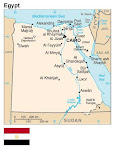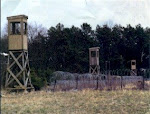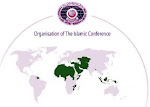 TOZEUR, Tunisia-Some are already at work when the gray November dawn begins to creep across the Sahara toward this "carpet capital" of Tunisia.Turbaned and burnoosed against the bitter cold, paid about $80 a month, they erect barricades of tightly woven palm branches known as "tabia" to keep the wind-blown sand out and the roads open. They are the "unsung heroes" of Tunisia's army fighting desertification-an unwieldy word which Webster's New World Dictionary describes as "the change of arable land into a desert either from natural causes or human activity." "Desertification is like cancer," says Hocine Khatelli at the Institute of Arid Zones in Medenine, at the eastern side of the desert war. "It is an international problem. A country threatened today will open the way to the Sahara's invasion somewhere else tomorrow."The Institute analyzes the impact of global warming, the intensity of droughts and the strength of sand storms.In the oasis of Kebili, Najet Belhadj, an intense young woman with dark hair falling on her shoulders, looks at the latest data in her laboratory. The wind, she says, is expected to blow as usual this year-120 days.The wind-driven disaster blinds camels and their owners, paralyzes airports and dumps up to six feel of sand in the narrow alleys of towns and oases.Its impact does not stop in Tunisia. The wind blown grit flies across the Mediterranean Sea, reaching the coasts of Spain, France, Italy, Greece and even Turkey. It brings the desert ever closer to Europe. Tourists fleeing the drab life of Europe's industrial cities increasingly fly to the edges of the Sahara to enjoy the star-studded skies, the silence and the captivating expanse of sands. They are rarely aware of the daily struggle involving 104,000 Tunisians or 4.4 percent of the country's work force-and the growing cost of keeping the threatening desert at bay. Some $345 million will be spent this year.
TOZEUR, Tunisia-Some are already at work when the gray November dawn begins to creep across the Sahara toward this "carpet capital" of Tunisia.Turbaned and burnoosed against the bitter cold, paid about $80 a month, they erect barricades of tightly woven palm branches known as "tabia" to keep the wind-blown sand out and the roads open. They are the "unsung heroes" of Tunisia's army fighting desertification-an unwieldy word which Webster's New World Dictionary describes as "the change of arable land into a desert either from natural causes or human activity." "Desertification is like cancer," says Hocine Khatelli at the Institute of Arid Zones in Medenine, at the eastern side of the desert war. "It is an international problem. A country threatened today will open the way to the Sahara's invasion somewhere else tomorrow."The Institute analyzes the impact of global warming, the intensity of droughts and the strength of sand storms.In the oasis of Kebili, Najet Belhadj, an intense young woman with dark hair falling on her shoulders, looks at the latest data in her laboratory. The wind, she says, is expected to blow as usual this year-120 days.The wind-driven disaster blinds camels and their owners, paralyzes airports and dumps up to six feel of sand in the narrow alleys of towns and oases.Its impact does not stop in Tunisia. The wind blown grit flies across the Mediterranean Sea, reaching the coasts of Spain, France, Italy, Greece and even Turkey. It brings the desert ever closer to Europe. Tourists fleeing the drab life of Europe's industrial cities increasingly fly to the edges of the Sahara to enjoy the star-studded skies, the silence and the captivating expanse of sands. They are rarely aware of the daily struggle involving 104,000 Tunisians or 4.4 percent of the country's work force-and the growing cost of keeping the threatening desert at bay. Some $345 million will be spent this year.To read more go to:
As in the days of Noah...






















































































.bmp)

























.bmp)